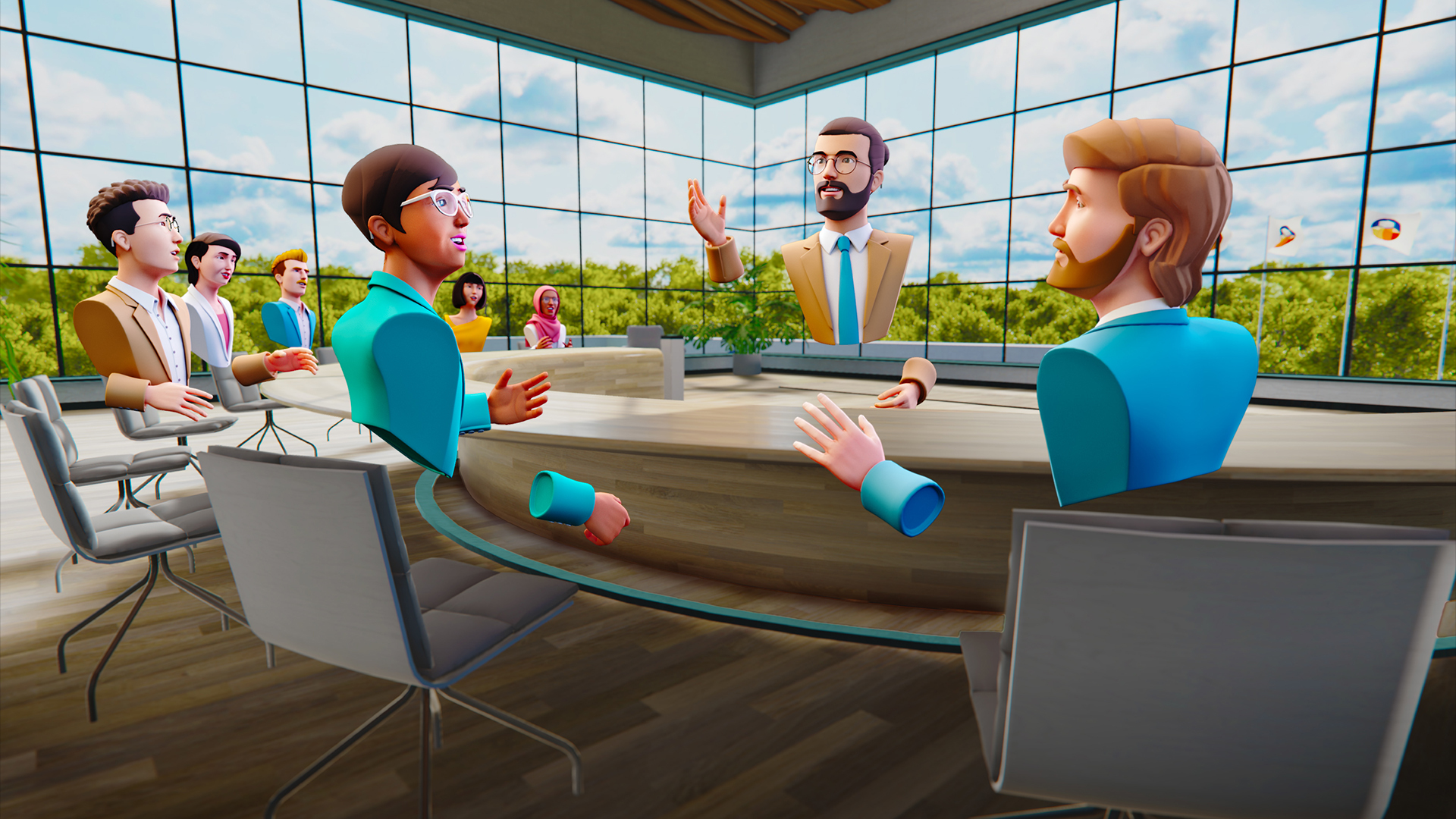Even as businesses bring their teams back to the office, remote working remains popular across many sectors. Tech workers, for example, are still spending on average more than half of their work week at home, enjoying the freedom, flexibility and reduced commuting time.
But it’s not all sunshine and stretchy pants. Satisfaction with remote work depends on your personality, home setup and the digital tools you use. The reality, a new study shows, is that many remote workers communicate poorly, are fatigued, become easily distracted, and feel isolated from colleagues.
The good news is that VR-based collaboration can help individuals and teams overcome some of these challenges.
Problem 1: Ineffective communication
One of the main issues for remote workers concerns communication itself. Communication is everything in the workplace, especially in roles requiring deep collaboration and knowledge-sharing. The tools we use to plan, create and discuss with others should therefore be the right ones for the job. In practice though, we use a pretty limited toolset comprising video meetings, email and messaging apps.
Each has its benefits, but none is a true replacement for face-to-face communication. Video calls can be time-inefficient, with frequent interruptions and overlapping speech disrupting proceedings. Email and messaging apps, meanwhile, are useful for asynchronous, one-to-all information sharing, yet not as information-dense or as contextually rich as face-to-face communication.
Solution: What distinguishes VR-based collaboration from these conventional digital tools is its ability to create the sensation of being face-to-face with others. A well-designed 3D virtual workspace will make verbal and nonverbal communication feel natural and effortless. And because the spaces look and feel real like real-world environments, they reinforce the sense that you’re working side by side with colleagues. This creates a foundation for better communication.
Problem 2: Procrastination
Successful remote work requires a large dose of self-discipline, and it’s sometimes all too easy to let tasks pile up even when deadlines are looming. Procrastination can arise for a variety of reasons, including how we manage our emotions. Unfortunately, the problem is exacerbated by fatigue so successive video calls aren’t helping — in fact, they can be exhausting, especially those with large numbers of participants. There’s even a Wikipedia page on it.
Solution: VR-based meetings have the effect of raising participants’ energy levels, partly because they’re mobile during discussions and partly because communicating in VR requires less cognitive load than video calls. Working in this new environment enhances focus, boosts confidence and helps participants to be more productive — a great antidote to our dillydallying.
Problem 3: Driven to distraction
Contrary to conventional wisdom, our brains aren’t very good at multitasking. People can generally only focus on one thing at a time. The result is that we’re easily distracted when working at home, especially when there are children and pets around, or if we don’t have a quiet, private room in which to work.
Solution: In VR, you don’t see the physical environment around you, so it’s easier to block out distractions at home. 3D workspaces are by their nature immersive and conducive to greater focus during meetings, helping you avoid the frequent pop-up notifications, pings and context-switching that occurs when working on a laptop computer.
Granted, in Glue meetings, users can elect to see and respond to work messages. However, we encourage teams to stay focused on their meeting agenda. It can take time to refocus on a task after responding to a message, and you can lose your flow. We’ve also found that — like in real offices — some Glue users choose to work by themselves, using the virtual space as a persistent, distraction-free zone to make notes, fill whiteboards and create kanban boards.
Problem 4: Loneliness
Lastly, remote working can make people feel isolated from their colleagues. Social interactions through video calls and messaging platforms lack the same intensity as those in-person. Young people are especially affected: one study found that 81% of Gen Z and Millennials fear loneliness from a long-term bout of home working. Workers have also reported feeling anxiety stemming from long hours spent on their own during the workday.
Solution: VR-based collaboration offers a higher level of social presence than conventional digital tools. The spaces themselves blend realistic visuals with 3D spatial audio to increase immersion. Meanwhile, expressive avatars and gesture-based communication help make people feel more connected to and ready to engage with others in the space.
Conclusion
Not all remote work is equal. Worker satisfaction will depend on a variety of factors. But having the right mix of digital tools is crucial to tackling the biggest pitfalls of remote working, and including VR-based collaboration alongside your conventional workplace toolset offers a win-win solution for employees and employers.
Book a demo here.




